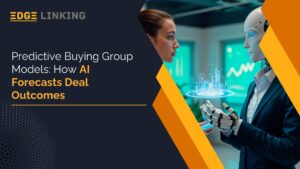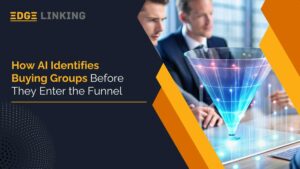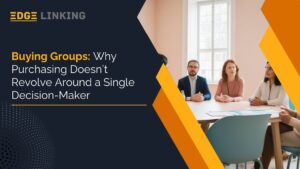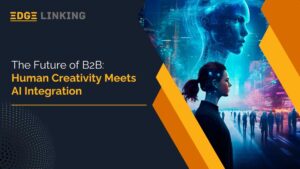Popups have long been a staple in digital marketing, but their reputation isn’t exactly stellar. Many users find them intrusive, annoying, and disruptive. However, with the advent of artificial intelligence, popups are undergoing a transformation. AI-powered popups are smarter, more intuitive, and better at driving engagement without frustrating users.
The Evolution of Popups in Digital Marketing
Popups first emerged as a marketing tool to capture user attention, promote special offers, and drive conversions. However, early implementations often led to negative user experiences. Poorly timed, irrelevant, and intrusive popups resulted in high bounce rates and frustrated visitors. Recognizing these issues, marketers and developers sought ways to make popups more effective and user-friendly.
With AI now in the picture, popups are evolving into dynamic, intelligent engagement tools that provide value rather than causing frustration. AI-powered popups analyze user behavior in real time, adapting to their interests and actions to ensure meaningful interactions. This shift marks a significant improvement in how businesses engage with their audience while maintaining a positive user experience.
In this blog, we’ll explore how AI-powered popups are revolutionizing user engagement, their benefits, and how businesses can use them effectively to boost conversions.
Why Traditional Popups Fail?
Traditional popups often fail because they are generic, disruptive, and poorly timed. Here’s why they tend to drive users away rather than engage them:
- Lack of Personalization – Most popups deliver the same message to every visitor, irrespective of their preferences, behavior, or history.
- Bad Timing – Popups that appear too soon or too frequently can frustrate users rather than engage them.
- Intrusive Design – Large, flashy popups that block content can create a negative user experience.
- Lack of Relevance – If a popup isn’t relevant to the user, it’s simply an unwanted distraction.
AI-powered popups address these issues by making engagement more intuitive and personalized, ensuring that users see the right message at the right time.
How AI is Transforming Popups
AI-powered popups leverage machine learning, predictive analytics, and user behavior data to create dynamic and personalized experiences. Here’s how AI is making popups smarter:
- Personalization at Scale
AI-driven popups analyze user behavior, browsing history, and demographic data to deliver tailored messages. For example:
- A first-time visitor might see a welcome discount offer.
- A returning user might get a reminder about an abandoned cart.
- A frequent buyer might receive a loyalty discount.
- Predictive Analytics for Smart Triggers
Instead of bombarding users with popups at random intervals, AI can determine the best time to show a popup based on:
- Time spent on the site
- Scroll behavior
- Exit intent
- Past interactions
For example, AI-powered exit-intent popups appear only when a user is about to leave the site, offering them a discount or incentive to stay.
- A/B Testing and Continuous Optimization
AI can run multiple variations of popups simultaneously and analyze which ones perform best. Through machine learning, it continuously refines messaging, design, and timing to maximize engagement and conversions.
- Natural Language Processing (NLP) for Conversational Popups
AI-powered chatbots integrated into popups provide a conversational experience rather than a static message. Instead of a simple discount offer, an AI-powered popup might ask, “Looking for something specific? Let us help you find the perfect product!”
- Multi-Channel Adaptability
AI-driven popups work seamlessly across different platforms—websites, mobile apps, and even email campaigns—ensuring a consistent and engaging user experience.
Benefits of AI-Powered Popups
AI-powered popups offer a range of benefits that make them superior to traditional popups:
- Higher Conversion Rates
Personalized, well-timed popups significantly increase the chances of conversions compared to generic ones. AI ensures that the right message reaches the right user at the right time.
- Improved User Experience
Because AI optimizes the timing and relevance of popups, users don’t feel bombarded or annoyed. The experience feels natural and helpful rather than intrusive.
- Increased Engagement
Smart popups encourage users to take action, whether it’s signing up for a newsletter, making a purchase, or engaging with content.
- Enhanced Customer Retention
By offering timely incentives, AI-driven popups can reduce cart abandonment rates and increase repeat purchases.
- Data-Driven Insights
AI-powered popups provide valuable data on user behavior, preferences, and engagement patterns, which can help businesses refine their marketing strategies.
Best Practices for Using AI-Powered Popups
To ensure AI-powered popups enhance user experience rather than disrupt it, follow these best practices:
- Prioritize User Intent
Use AI to analyze user intent and display popups accordingly. For instance:
- Offer discounts only to users who show hesitation in purchasing.
- Provide relevant content recommendations based on browsing history.
- Display subscription popups to users who engage with blog content.
- Optimize Timing and Frequency
AI can help determine the best moment to show a popup. Avoid bombarding users with multiple popups in a short time span, as this can lead to frustration.
- Use Exit-Intent Popups Wisely
Exit-intent popups can be highly effective, but they should add value rather than act as a last-minute plea. Offering an exclusive discount, free resource, or helpful information can encourage users to stay.
- A/B Test Everything
Continuously test different designs, copy, and CTA buttons to see what resonates best with users. AI-driven tools can automatically optimize popups based on performance.
- Keep the Design Non-Intrusive
Ensure popups don’t completely cover the screen or disrupt the user experience. Consider using slide-in popups or sticky banners instead of full-screen overlays.
- Integrate with Chatbots
AI chatbots within popups can engage users in conversation, helping them find products, answer queries, and guide them through the purchasing process.
Final Thoughts
AI-powered popups are redefining how businesses engage with users. By prioritizing personalization, optimizing timing, and enhancing relevance, these popups offer a more intuitive and non-intrusive way to boost conversions. The key is to leverage AI wisely—focusing on user intent, continuous testing, and seamless integration.
As AI continues to evolve, businesses that embrace intelligent popups will gain a competitive edge by enhancing user engagement while maintaining a frictionless browsing experience. The future belongs to brands that can strike the perfect balance between automation and personalization, creating meaningful interactions without the annoyance of traditional popups.
AI-powered popups boost engagement with smart personalization, perfect timing, and a seamless user experience—no more intrusive disruptions!






